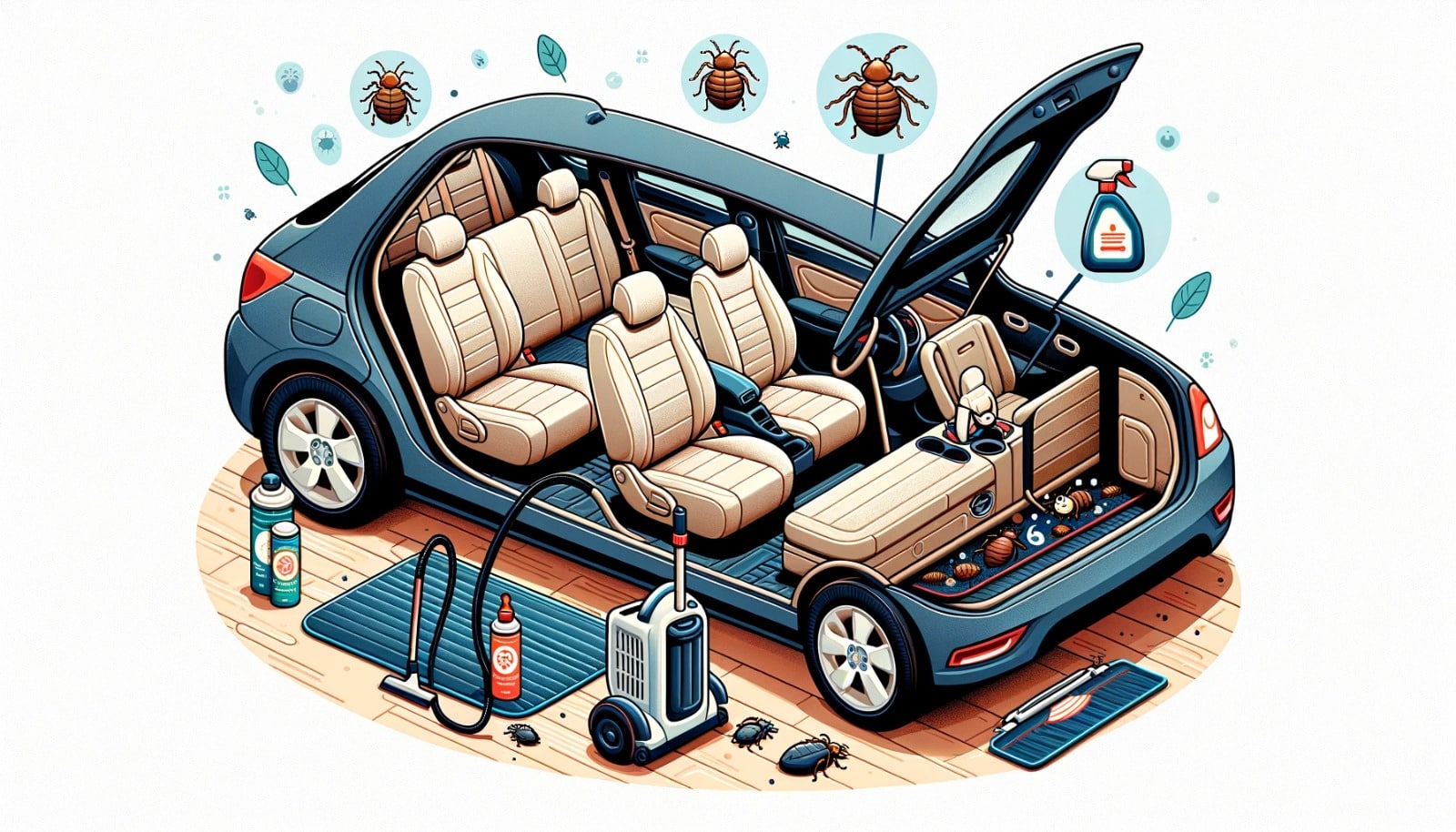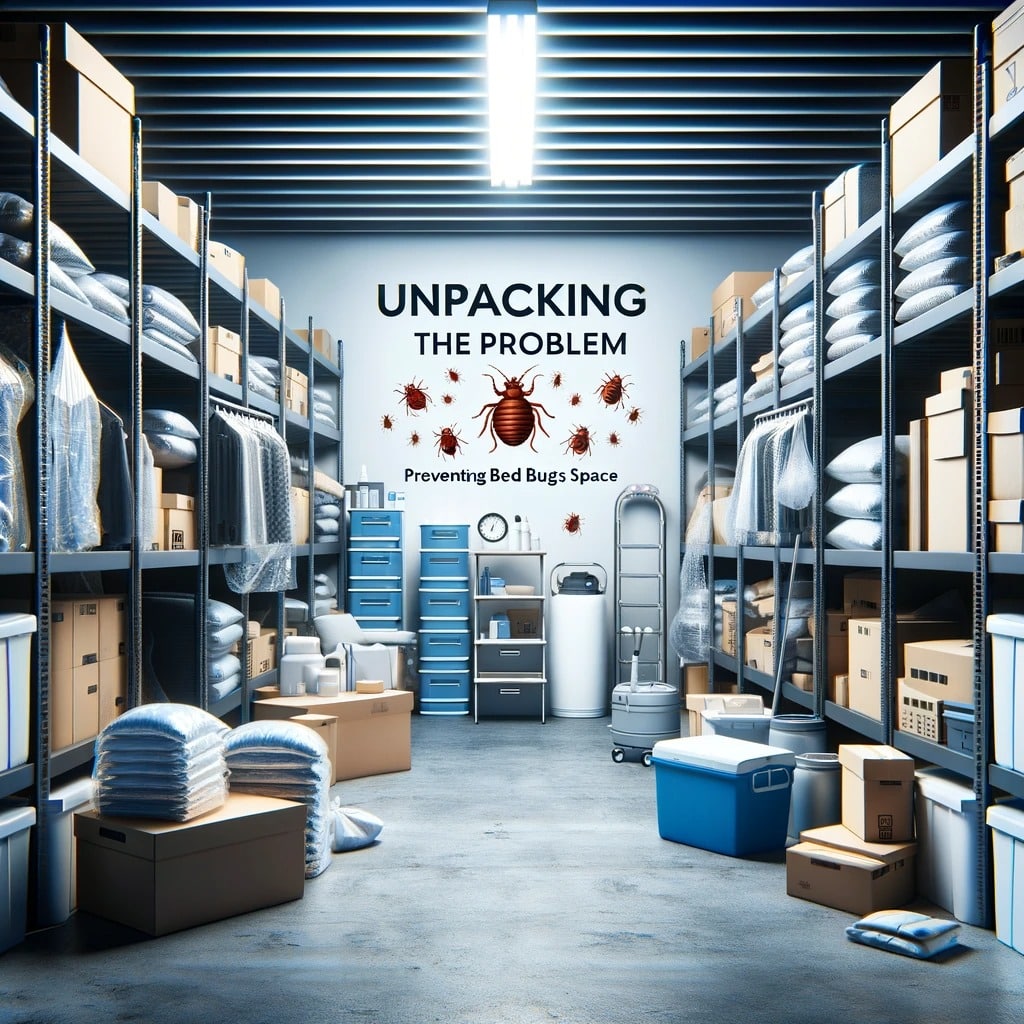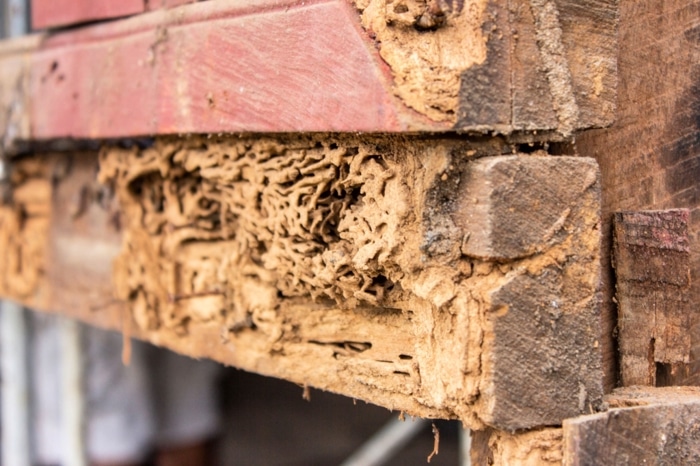Imagine stepping into your car for a morning commute, only to discover you’re not alone – you’re sharing your space with bed bugs. This scenario is more common than you might think, and the confined space of a car can quickly turn into a distressing infestation site. Understanding how to effectively tackle this issue is crucial for any car owner facing such an unwelcome situation.
Identifying the Problem: Signs of Bed Bugs in Car
Detecting bed bugs in your car requires a keen eye and an understanding of what to look for. These tiny pests, often not more than the size of an apple seed, can hide in the smallest crevices. One of the first signs of their presence is often physical bites on your skin after spending time in the car. These bites are typically red, itchy, and appear in a line or cluster.
Another sign to watch out for is small, dark stains on your car seats or upholstery. These could be bed bug excrement, which appears as small, black spots. You may also find tiny, pale yellow skins that nymphs shed as they grow. In severe infestations, a musty, sweet odour, akin to overripe raspberries, might become noticeable in your car.
For a thorough inspection, focus on seams, folds in upholstery, under seat covers, and around the edges of the trunk. Using a flashlight can help spot these elusive pests. If you find evidence but are unsure, consider consulting a professional from Pest Share, who can confirm the presence of bed bugs and advise on the best course of action.
Assessing the Risk: My Friend Has Bed Bugs and Sat in My Car
It’s a situation many dread – a friend who’s battling a bed bug infestation has just taken a ride in your car. Bed bugs can hitch a ride on clothing, bags, and other personal items, making this a valid concern. The risk of a few bed bugs starting an infestation in your car is real, but it’s not inevitable.
Immediate action can make a big difference. Start by thoroughly vacuuming your car’s interior, paying special attention to nooks and crannies. Dispose of the vacuum bag or empty the canister outside, far from your home and car. Washing and drying any removable fabrics at the highest temperature possible can also help. Keep in mind that while these steps are beneficial, they might not be foolproof.
To ensure peace of mind, a professional inspection might be warranted. Pest Share offers specialised services to assess and treat potential infestations in cars, ensuring every hidden corner is checked and treated if necessary.

Easy Pest Control for Busy Managers.
The Heat Treatment: How Long Can Bed Bugs Survive in a Hot Car
Leveraging heat to combat bed bugs is a well-known strategy, and it can be particularly effective in a car due to the contained space. Bed bugs, at all stages of life, are susceptible to high temperatures. However, the key is maintaining a high temperature consistently.
Research indicates that bed bugs can be killed at temperatures of 117-122 degrees Fahrenheit (47-50 degrees Celsius). In a car, achieving and maintaining such temperatures can be challenging. On a hot day, the interior of a parked car in direct sunlight can reach these temperatures, but it’s not a guaranteed or consistent method for bed bug eradication.
For a more controlled approach, portable heaters designed for car infestations can be used. These heaters raise the temperature inside the car to a level lethal to bed bugs for a sustained period. This process typically takes several hours and requires monitoring to ensure safety and effectiveness.
Remember, while DIY methods are available, professional services like those from Pest Share provide a comprehensive solution, utilising industrial-grade equipment and expert knowledge to ensure your car is completely free of bed bugs.

The Extreme Heat Solution: Can Bed Bugs Die in a Hot Car
While it’s true that extreme heat can be lethal to bed bugs, relying on the temperature inside a parked car on a hot day is not the most reliable method. It’s crucial to understand that bed bugs can withstand lower high temperatures for short periods. However, when exposed to temperatures above 120 degrees Fahrenheit (49 degrees Celsius) for an extended period, their survival becomes unlikely.
Creating this environment in a car requires more than just a sunny day. Solar heat may not penetrate all the areas where bed bugs hide, like under seats or in the trunk. To effectively use heat, consider a comprehensive approach. Portable car heaters can maintain a high temperature consistently throughout the vehicle for the required duration. These devices circulate hot air, reaching the nooks and crannies where bed bugs hide.
Safety is paramount during this process. Ensure that any device used is specifically designed for use in vehicles and always follow the manufacturer’s guidelines. Also, removing any heat-sensitive items from your car before treatment is essential.
Chemical Warfare: Bug Bomb for Car
Chemical treatments, like bug bombs or foggers, are another method to tackle bed bugs in your car. These products release a pesticide into the air, which settles on all surfaces, potentially reaching bed bugs in hidden spots. However, their effectiveness can be limited, as they may not penetrate deep enough into fabrics and cracks where bed bugs hide.
When using a bug bomb, it’s essential to choose a product specifically designed for use in enclosed spaces like cars. These formulas are typically less aggressive than those used in homes but still effective against pests. Always follow the instructions carefully, as misuse can lead to ineffective treatment or even health hazards.
After setting off a bug bomb, keep the car closed for the time specified on the product label, usually a few hours. Then, thoroughly air out your vehicle before using it again. It’s advisable to clean all surfaces afterward, especially areas that come into direct contact with skin, like steering wheels and seat belts.
Despite their convenience, bug bombs are often not a standalone solution. They might need to be part of a broader treatment plan, possibly involving professional services. Pest Share’s expertise in choosing and applying the right chemical treatments can be invaluable in ensuring effective eradication without damaging your car’s interior.
Comprehensive Approach: Bed Bug Car Treatment
Successfully ridding your car of bed bugs often requires a multifaceted approach, combining heat treatment, chemical solutions, and thorough cleaning. Start by decluttering your car. Remove all items, especially those hidden under seats or in pockets, as these could harbour bed bugs.
Vacuuming is a critical step. A thorough vacuum of the entire car, focusing on seams, crevices, and under seats, can remove a significant number of bed bugs and eggs. Remember to dispose of the vacuum contents in a sealed bag outside your home.
Next, consider a combination of heat treatment and chemical treatment. As discussed, heat can be very effective but may not reach every part of the car. A chemical treatment can address any gaps, ensuring all areas are covered. It’s important to use products safe for use in vehicles and to follow all safety instructions.
For fabric surfaces, steam cleaning can be highly effective. The combination of heat and moisture can penetrate deep into upholstery, killing bed bugs and their eggs. Ensure the interior is completely dry afterward to prevent mold growth.
Regular follow-up is key. Re-inspect your car periodically and repeat treatments if necessary. Remember, persistence is crucial in the battle against bed bugs.
These DIY methods can be effective, but for comprehensive and guaranteed results, professional services are recommended. Pest Share, with their expertise in bed bug eradication, can provide a customised treatment plan, ensuring your car is completely bed bug-free. Their approach, combining advanced techniques and professional-grade products, offers peace of mind and saves you the hassle of tackling the infestation on your own.
Maintenance and Prevention
Preventing bed bugs from infesting your car in the first place is far easier than eradicating them once they’ve settled in. Regular maintenance is key to this effort. Vacuum your car frequently, focusing on crevices and hidden areas where bed bugs might find refuge. Pay special attention to cleaning if you’ve had passengers who might be dealing with bed bug issues in their homes.
Be cautious with items that enter your car. Luggage, bags, and even second-hand items can carry bed bugs. Inspect and clean these items before placing them in your vehicle. For added protection, consider using protective encasements for seats or periodic treatments with natural repellents that are safe for car interiors.
Regularly checking for signs of bed bugs is also crucial. Early detection can prevent a full-blown infestation. Look out for the signs discussed earlier, and if you suspect bed bugs, act immediately.
Conclusion
Dealing with bed bugs in your car can be a daunting task, but with the right approach, it’s entirely manageable. Whether you opt for DIY methods or professional assistance, the key is to act quickly and thoroughly. Remember, Pest Share is just a call away, offering expert advice and treatment solutions tailored to your specific situation. Don’t let bed bugs turn your daily commute into a nightmare. Take action today and drive with peace of mind.





